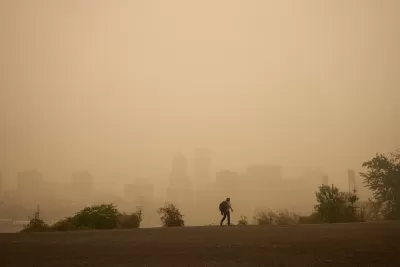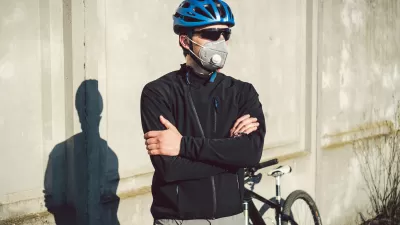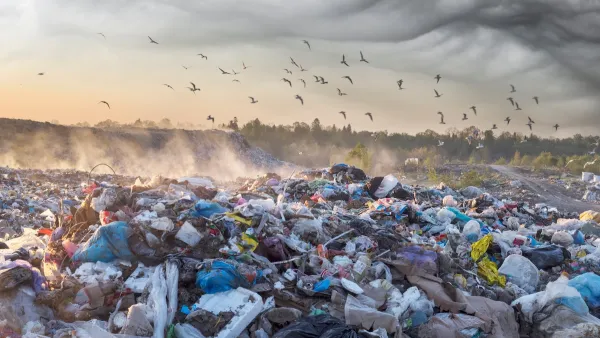Fires and extreme heat are generating more harmful particulate matter.

According to a report from the First Street Foundation, roughly one-quarter of Americans live in places with unhealthy air quality. As Robin Foster explains in Health Day, First Street says that number could grow to 125 million in the coming decades. “Poor air quality is linked to increases in levels of both particulate matter and ozone, which are rising because of extreme heat, drought and wildfires. Particulate matter (PM2.5) is particularly dangerous because the tiny particles can penetrate the lungs and trigger a host of health problems.”
In some cases, the rising prevalence and growing strength of wildfires contribute to poor air quality, leading to the greatest declines in air quality in California, Oregon, and Washington. But the East Coast has not been immune from harmful impacts. Smoke from fires in the Florida panhandle prompted first-of-their-kind evacuations of residents.
Meanwhile, research from Redfin, highlighted in an article in The Hill, reveals that over 1.2 million people moved away from cities at risk of poor air quality between 2021 and 2022, and insurance companies are leaving states with high wildfire risk wholesale.
FULL STORY: A Quarter of Americans Breathe 'Unhealthy Air,' Report Shows

Maui's Vacation Rental Debate Turns Ugly
Verbal attacks, misinformation campaigns and fistfights plague a high-stakes debate to convert thousands of vacation rentals into long-term housing.

Planetizen Federal Action Tracker
A weekly monitor of how Trump’s orders and actions are impacting planners and planning in America.

In Urban Planning, AI Prompting Could be the New Design Thinking
Creativity has long been key to great urban design. What if we see AI as our new creative partner?

Milwaukee Launches Vision Zero Plan
Seven years after the city signed its Complete Streets Policy, the city is doubling down on its efforts to eliminate traffic deaths.

Portland Raises Parking Fees to Pay for Street Maintenance
The city is struggling to bridge a massive budget gap at the Bureau of Transportation, which largely depleted its reserves during the Civd-19 pandemic.

Spokane Mayor Introduces Housing Reforms Package
Mayor Lisa Brown’s proposals include deferring or waiving some development fees to encourage more affordable housing development.
Urban Design for Planners 1: Software Tools
This six-course series explores essential urban design concepts using open source software and equips planners with the tools they need to participate fully in the urban design process.
Planning for Universal Design
Learn the tools for implementing Universal Design in planning regulations.
Gallatin County Department of Planning & Community Development
Heyer Gruel & Associates PA
JM Goldson LLC
City of Camden Redevelopment Agency
City of Astoria
Transportation Research & Education Center (TREC) at Portland State University
Jefferson Parish Government
Camden Redevelopment Agency
City of Claremont





























